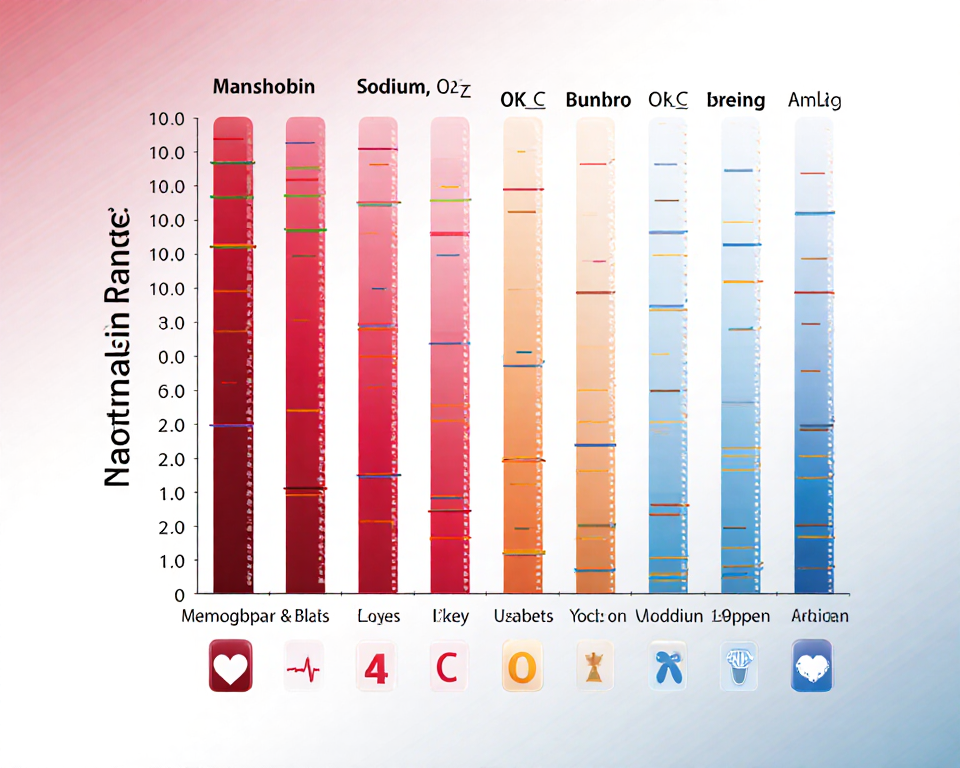Blood Test Normal Range Chart for Adults: Your Personal Health Compass

Ever stared at a lab report and felt like you’d just opened a treasure chest full of numbers that only a doctor could decipher? That’s where a blood test normal range chart for adults comes in—your trusty map to navigate the sea of lab values. In this article, we’ll break down what the chart is, why it matters, how to read it, and how to use it to keep your health on course. Grab a coffee, and let’s chart a course together.
What Is a Blood Test Normal Range Chart?
A blood test normal range chart lists the reference values for various blood components—white cells, red cells, electrolytes, liver enzymes, and more—established by laboratories based on healthy adult populations. These ranges serve as a baseline: if your result falls within the range, it’s generally considered “normal.” If it falls outside, it may flag a potential health issue.
The Anatomy of the Chart
- Parameter – the specific blood component (e.g., hemoglobin, sodium).
- Unit – the measurement unit (g/dL, mmol/L).
- Reference Range – the accepted lower and upper limits.
- Population – often “adult” or “adult male/female” to reflect demographic differences.
Why the Chart Is Not a One‑Size‑Fits‑All
Remember, a chart is a guide, not a verdict. Factors like age, pregnancy, medications, and chronic conditions can shift what’s considered normal for a particular person. Think of the chart as a compass that points you toward potential concerns but doesn’t dictate the final destination.
Why It Matters for Adults
Have you ever wondered why your doctor might order a CBC (complete blood count) before a routine check‑up? The answer is simple: early detection. By comparing your values to a blood test normal range chart for adults, clinicians can spot red flags—anemia, infection, kidney dysfunction—before symptoms flare up.
A Quick Anecdote
Dr. Patel, a family physician, once joked to a patient, “If your lab values were a weather report, the chart is the forecast. It tells us whether we’re headed for a sunny day or a storm.” That metaphor rings true: the chart helps anticipate health “storms” before they hit.
The Bottom Line
- Prevention – Spot problems early.
- Personalized Care – Tailor treatments based on deviations.
- Peace of Mind – Understand where you stand on the health spectrum.
Interpreting the Chart: Key Parameters
Not every blood test is created equal. Let’s focus on the most common components and how to read their ranges.
1. Complete Blood Count (CBC)
| Parameter | Unit | Normal Range (Adults) |
|———–|——|———————–|
| Hemoglobin | g/dL | 13.5–17.5 (men) / 12.0–15.5 (women) |
| Hematocrit | % | 38.3–48.6 (men) / 35.5–44.9 (women) |
| White Blood Cell Count | ×10^9/L | 4.5–11.0 |
| Platelets | ×10^9/L | 150–450 |
2. Basic Metabolic Panel (BMP)
- Glucose – 70–99 mg/dL (fasting)
- Sodium – 135–145 mmol/L
- Potassium – 3.5–5.0 mmol/L
- Creatinine – 0.6–1.3 mg/dL (men) / 0.5–1.1 mg/dL (women)
3. Liver Function Tests (LFTs)
- ALT (SGPT) – 7–56 U/L
- AST (SGOT) – 10–40 U/L
- ALP – 44–147 U/L
How to Read Deviations
- Below the Lower Limit – May indicate deficiency, bone marrow suppression, or bleeding.
- Above the Upper Limit – Could signal infection, inflammation, or organ stress.
- Mildly Outside – Often a “gray area”; repeat testing or clinical correlation is advised.
Common Variations and Exceptions
Even a chart that’s as reliable as a Swiss watch can have quirks. Here’s what to watch for.
1. Age and Gender Differences
- Women’s hemoglobin range is lower due to menstruation and pregnancy.
- Menopause can shift hormone‑related values.
2. Ethnic and Genetic Factors
Certain populations have naturally lower or higher baseline levels (e.g., some African American groups have lower hemoglobin).
3. Lifestyle Influences
- Smoking can raise CO₂ levels and alter oxygen saturation.
- High Altitude living elevates red blood cell count.

4. Lab Variability
Different labs may use slightly different reference ranges based on their equipment and population. Always check the lab’s footnotes.
Practical Tips for Using the Chart
You’re not just a passive reader; you can actively use the chart to stay informed.
1. Keep a Personal Health Log
- Record each lab result with the corresponding reference range.
- Note any symptoms that coincide with abnormal values.
2. Ask the Right Questions
- “Why is my value outside the normal range?”
- “Is this a one‑off reading or a trend?”
3. Share with Your Healthcare Team
Bring a printed chart or a digital copy when you visit your doctor. It’s a visual aid that can spark deeper discussion.
4. Use Technology Wisely
Many health apps let you upload lab results. Some even flag when values fall outside the normal range. Just be sure the app uses up‑to‑date reference ranges.
5. Don’t Panic Over Minor Deviations
If your sodium is 147 mmol/L, that’s only a tiny bump. A single abnormal result doesn’t always mean a serious problem. Follow your doctor’s guidance.
Charting Your Health Journey
Imagine your blood test normal range chart for adults as a GPS system: it doesn’t drive you, but it tells you where you are and suggests the best route to your destination—optimal health. By understanding the numbers, you can make smarter choices: adjust diet, schedule follow‑ups, or seek specialist care when needed.
The Final Thought
Health is a marathon, not a sprint. A single lab report is just one checkpoint. Use the chart as a guide, not a verdict. Stay curious, stay informed, and let the numbers help you steer toward a healthier tomorrow. And remember, as the old saying goes, “Health is wealth”—so treat your body like the treasure it truly is.